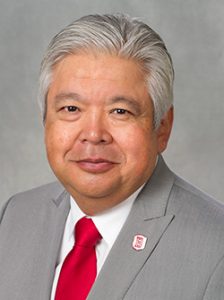
An email from university president Gary Roberts was sent to all faculty and staff last Tuesday with concerns about Bradley University’s future.
Roberts’ email announced the news of a 243-student shortfall in enrollment, which will lead to an operating deficit between $4.5 and $5.7 million for the 2018-19 fiscal year.
Out of the overall shortfall, student retention rates and on-campus graduate student enrollments stood out the most. An 82 percent first-year student retention rate, marked the lowest rate since the earliest available data in 2002.
There were 81 less juniors and seniors retained than the budgeted number, the first time this has happened according to Robert’ email. Also, there was a 14.25 percent shortage of budgeted on-campus graduate student enrollment.
According to Nathan Thomas, vice president for student affairs, university administrators had concerns about the first-year student retention rate, but not by a large margin as it appeared.
“We had concerns coming into the year on the retention number, a lot of it because of the size of the class. And then, that was [an] abnormality there,” Thomas said. “As far as what happened, we don’t have those answers quite yet.”
Given the large number of the students in the freshmen class last year, President Roberts believes stretched resources could be a factor in a low first-year student retention rate.
“We didn’t know what was going to happen, but we weren’t going to be surprised if the retention slipped a little, but it slipped a lot,” Roberts said. “The size of the class and the composition of the class may explain some of the retention issues, but it probably doesn’t explain all of it.”
“A large chunk of that freshmen class were first-generation students,” Roberts said. “And we had accepted a lot of students in that class who were at the lower end of the ACT test range.”
Roberts also believes last year’s murder of freshman student Nasjay Murry did not help with retaining and recruiting freshmen.
“Did they not show up because the Chicago Tribune had a big headline that said ‘Bradley student murdered’? I don’t know,” Roberts said. “It was clearly not helpful, but what role it played we just have no idea.”
Roberts said the administration does not have the answers as to why the upperclassmen retention fell below the budgeted number.
“We don’t know and that’s part of the problem,” Roberts said. “We have people do deep dives into the data to identify why people did not come back. We have never had an attrition issue with the juniors and seniors before. Something happened last year that [caused] upperclassmen not [to] come back.”
The number of first-year students this fall enrolled is 1090, which falls within the admissions goal of 1080- 1120, but fell short of the budgeted number of 1120, according Roberts’ email.
Looking forward, Justin Ball, vice president for enrollment management, said the budgeting strategy needs to be changed.
“This year, I think we learned some really hard lessons in budgeting,” Ball said. “We set the budgets in February or March of each year. I think people used numbers of where we were at that time to extrapolate budgets. We probably aren’t prepared to extrapolate budgets in February.”
According to Roberts, it was a surprise when the first-year student numbers fell below the budgeted number.
“The budgeted number came from the fact that, in March, Justin produced data that based on historical patterns, would suggest that we would have about 1150 students,” Roberts said. “So budgeting for 1120, we thought was conservative. It had nothing to do with the enrollment goal, it had to do with what the admissions office was telling us what it looked like we were going to get.”
As far as the shortfall in incoming graduate students, Roberts said it is an issue not just facing Bradley, but also for schools all over the United States.
“We had a precipitous drop-off in on-campus graduate students,” Roberts said. “Almost all that drop off is international students. It is a phenomenon that is happening to universities across the country. International students are going in droves to Australia, Canada and the U.K.”
Roberts stressed that the problem does not require immediate action from administration, but there will be changes in the future.
“We have no intention of reducing the size of the faculty by laying anybody off,” Roberts said. “We don’t plan to cost cut our way out of the looming problems.”
Roberts stated the reason for being transparent and open about the enrollment shortfalls is to get everyone on the same page.
“Bradley needs the faculty and staff to get on board with the notion that we have to do things differently,” Roberts said. “You can’t ask people to get on board and work to develop new online programs and interdisciplinary courses if you’re not square with them and tell them what is going on.”
Roberts said Bradley was scheduling to have a near balanced budget this year and have a million dollar surplus next year, but due to the low enrollment numbers, that plan is now “shot.”




